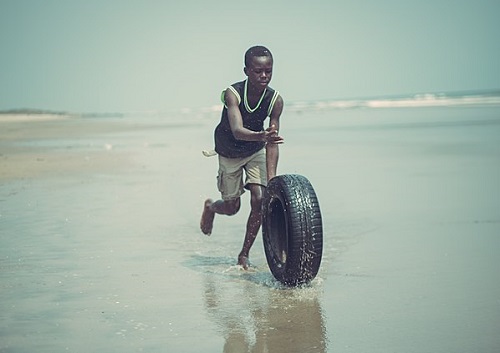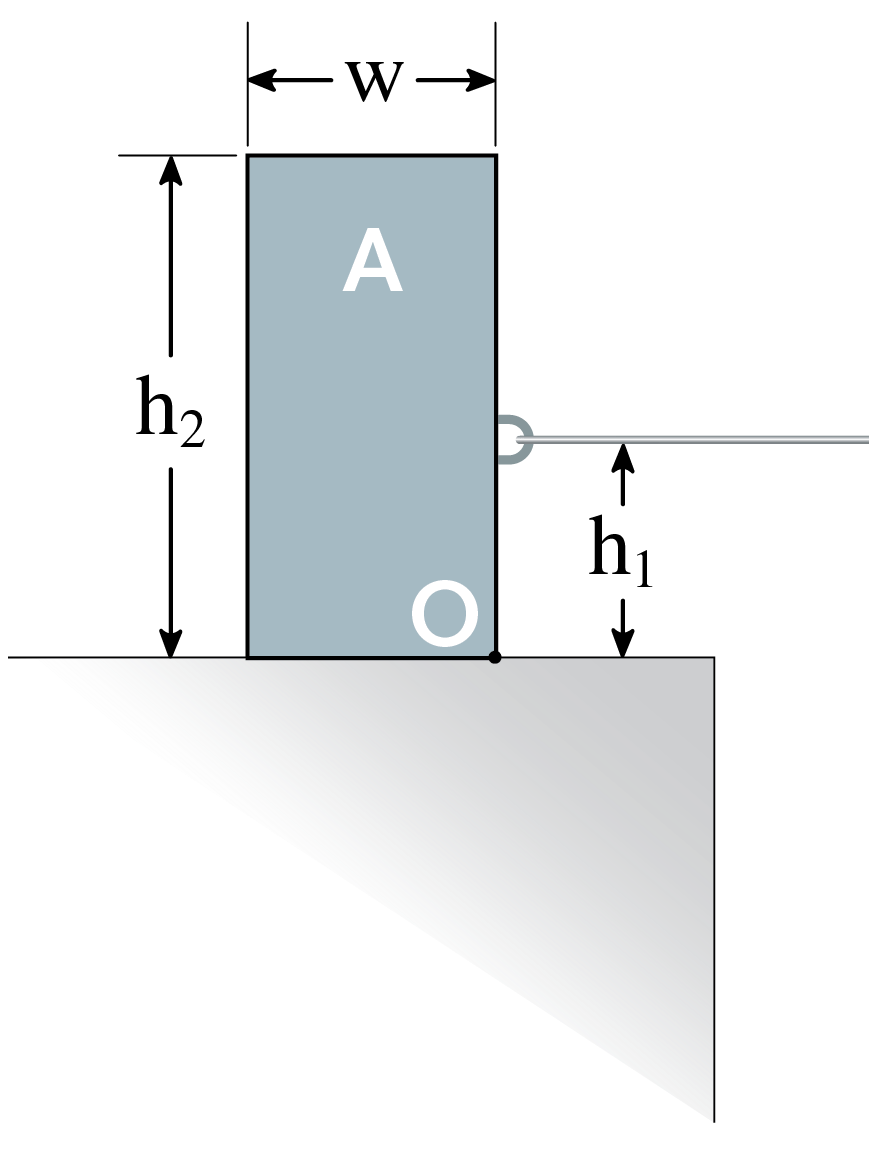General Planar Motion
In general planar motion, bodies are both rotating and translating at the same time. As a result we will need to relate the forces to the acceleration of the center of mass of the body as well as relating the moments to the angular accelerations.

To analyze a body undergoing general planar motion, we will start by drawing a free body diagram of the body in motion. Be sure to identify the center of mass, as well as identifying all known and unknown forces, and known and unknown moments acting on the body. It is also sometimes helpful to label any key dimensions as well as using dashed lines to identify any known accelerations or angular accelerations.
Next we move on to identify the equations of motion. At the core of this, we will go back to Newton's Second Law. Since this is a rigid body system, we include both the translational and rotational versions.
| \[\sum \vec{F}=m*\vec{a_G}\] |
| \[\sum \vec{M_G}=I_G*\vec{\alpha}\] |
As we did with the previous translational systems, we will break the force equation into components, turning the one vector equation into two scalar equations. Additionally, it's important to always use the center of mass (G) for the accelerations in our force equations and take the moments and moment of inertia about the center of mass for our moment equation.
| \[\sum F_{x}=m*a_{Gx}\] |
| \[\sum F_{y}=m*a_{Gy}\] |
| \[\sum M_{G}=I_G*\alpha \] |
Plugging the known forces, moments, and accelerations into the above equations we can solve for up to three unknowns. If more than three unknowns exist in the equations, we will sometimes have to go back to kinematics to relate quantities such as acceleration and angular acceleration.
Sometimes it's inconvenient to take moments about the center of mass, G. We have two other options, if we'd like to take moments about another point. When choosing which moment equation version to use, consider what accelerations and mass moments of inertia you know, and what point will reduce the number of unknown forces captured in the moment equation.
First, if we want to take moments about the instantaneous center of zero velocity (ICZV) for a rigid body, we can use the fixed axis rotation version of the moment equation. Note that the subscripts always have to match - that is, if we take moments about the IC, we need to find the mass moment of inertia about the IC.
| \[\sum \vec{M}_{IC}=I_{IC}\vec{\alpha}\] |
If we want to take moments about any point, P, on the rigid body, we will need to add an extra term to our equation, This extra term is related to the moment caused by the linear inertia (maG). And there are two versions of this equation, using either G subscripts or P subscripts for I and a.
| \[ \sum \vec{M}_{P}=I_{G}\vec{\alpha}+ \vec{r}_{G/P} \times m \vec{a}_G \] |
| \[ \sum \vec{M}_{P}=I_{P}\vec{\alpha}+ \vec{r}_{G/P} \times m \vec{a}_P \] |
Be sure the I and a subscripts (either G or P) match each other when you use these equations, and use the vector (both i and j components) for aG or aP.







